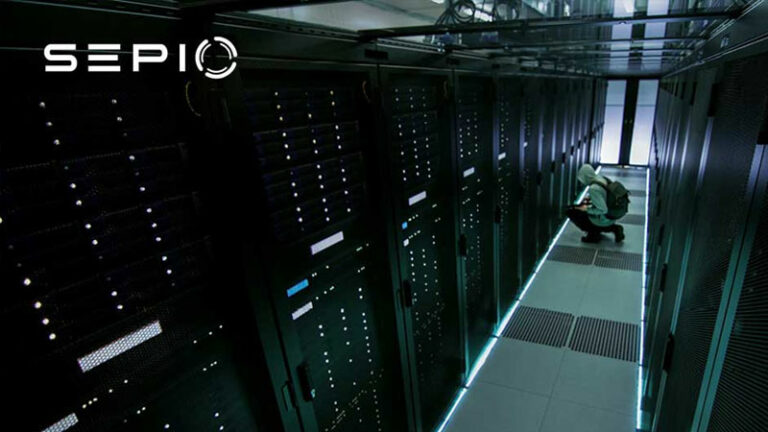Hidden cybersecurity risks can pose significant threats to both individuals and organizations. These risks often lurk beneath the surface, undetected until they are exploited by malicious actors. Bad actors operate globally, and the connections between cyberspace and physical systems make it complex to minimize vulnerabilities in cyber networks. Identifying these hidden cybersecurity risks is critical for maintaining robust security.
Hidden Network Security Risk: Hardware-Based Attacks
Hardware attacks are stealthy and represent significant hidden network security risks. Unlike software-based attacks, hardware attacks exploit vulnerabilities in physical components and peripheral devices. These hidden risks are often overlooked but can cause severe damage.
Did you receive a USB mug warmer as a gift? Hidden cybersecurity risks can be concealed in seemingly harmless devices. If it can be connected to your computer, it can be weaponized. Be cautious of Man-in-the-Middle Attacks (MITM) where attackers disguise malicious tools as everyday gadgets.
Employee Training: Preventing Hidden Cybersecurity Threats
Trust. One of the most important qualities, an employee must have. Make sure that you trust the devices they use as well. Cybersecurity training and awareness for employees is a key factor in your cybersecurity posture. Careless/uninformed staff are one of the greatest threats to organizations’ cybersecurity. Just because employees have good intentions, it does not mean that they cannot unwittingly cause a major cybersecurity incident. A lack of employee training on good cyber hygiene could have perilous consequences for your organization. Staff have insider privileges that make attackers’ lives easier. And these bad actors often target employees and the devices that they use without the victim knowing.
Supply Chain Vulnerabilities
You’re only as strong as your weakest link. Think you have all hidden cybersecurity risks sorted? Think again. How secure are the vendors in your supply chain? Imagine having CCTV covering all perimeters of your house, a high-tech alarm system. Burglar bars on all your windows to protect against intruders, but then leaving the door open. All your security measures are essentially useless. Now apply this to cybersecurity. Cybersecurity software enforcement and stringent regulations are essentially useless if your supply chain is not as protected as you.When organizations are heavily secured, including government agencies, bad actors seek to target third parties which are easier to infiltrate. Network security vulnerabilities can be exploited via these weak points.
Beware of Public Charging Ports: Juice Jacking Attacks
Are you a frequent user of airport charging ports? Proceed with caution – you might just be giving away all your private information…
Known as “juice jacking”, this tactic is extremely alarming due to the trust we give to airport charging ports. Nothing is more attractive than a charging port when our device is about to run out of battery. We are getting ready to board a long-haul flight where entertainment is necessary. And in the 21st century, entertainment is synonymous with technology (what ever happened to books?).
Attackers are exploiting this vulnerability and manipulating public charging stations. In an attempt to access private information stored on the device that you connect. Where better to do that than the airport?
IoT Devices: Increasing Entry Points for Attackers
IoT might seem great, but more devices mean more entry points for attackers. Make sure all your devices are covered.
IoT devices bring a number of cybersecurity risks to an organization due to their need for a network connection. In connecting to the network, the IoT devices become an entry point for attackers. With the proliferation of internet-connected devices, there are consequently more entry points for attackers. Furthermore, many of these IoT devices are part of our daily life. This meaning that they are used both in the office and in less secure environments. The more IoT devices that you are using without sufficient protection, the bigger the gift that you are giving attackers.
Protect Against Ransomware: Backup Your Data
You do have your data backed up, right? Ransomware attacks are on the rise so regular backups are crucial.
People are not the only thing that can be taken hostage; your data can as well. Data is fundamental to all organizations, and many enterprises also possess intellectual property that is invaluable to their operations – and to attackers.
Ransomware attacks, if successful, give perpetrators immediate financial benefits which can often be in the range of millions of dollars. However, organizations are advised not to pay the ransom because this does not guarantee the recovery of the encrypted data. Instead, it is best that organizations take proactive measures and regularly backup their data to better protect themselves in the first place.
Although there are cybersecurity measures in place that can reduce an enterprise’s vulnerability to a ransomware attack, there are no actions that provide complete protection. Hence, regular data backups can offer that extra layer of security. And, if all organizations do this, ransomware attacks will be less effective which will hopefully reduce the overall appeal of conducting such attacks. Giving cybersecurity teams just one less problem to worry about.
Physical Security: Don’t Leave Your Devices Unattended
Would you leave your wallet on a table at a Starbucks while you go to the bathroom? Hopefully not. So why would you leave your laptop on a coffee shop table where it is vulnerable to an attack?
To a thief, an open wallet left on a coffee shop table is like candy cane to a child. To a hacker, the candy cane is an unattended laptop. Hardware attacks require the attacker to gain physical access to a device or network, and a coffee shop is the perfect alternative location when it is too challenging to access the enterprise’s offices.
So, you are at your local café. You have plugged a USB phone charger into your laptop (because you are cybersecurity aware and do not want to plug your phone into a public charging port – smart). But then you run to the bathroom, and in the time that you have left your laptop exposed… The fellow espresso drinker sitting next to you has switched out your USB charger to one that is spoofed, known as a USB Ninja Cable. When you return, you are none the wiser because it looks identical to your original device and it is still charging your phone (Juice Jacking). However, this device can covertly conduct perilous activities that put your organization at risk of a data breach.
So, no, do not hold it in if you need to go to the bathroom, but rather put your laptop away because those few short minutes that you leave it unattended could be the opportunity that an attacker grabs to initiate an attack (Evil Maid Attack).
BYOD Policies: Balancing Flexibility and Security
Did BYOD make your life easier? Well, it made attackers’ lives easier too. Don’t neglect hidden cybersecurity risks in favor of simplicity.
BYOD brings many benefits, including a rise in employee satisfaction due to workplace flexibility, and reduced costs for the company as a result of not needing to provide as many devices. However, BYOD devices typically have fewer security measures in place in order to enhance the user’s experience. Great for the user, extremely perilous for the organization. “Fewer security measures” are the three words that any cybersecurity team does not want to hear. Contradictorily, and understandably, these words are music to the ears of bad actors. Depending on the organization’s BYOD policies, it is likely that these devices contain, or have access to, sensitive information even when they are used out of the office.
Make sure all your devices are protected, including those that you use for both work and personal purposes. It is not just the enterprise’s data that you should want to protect. Do you really want an attacker accessing your Netflix account? They make enough money from their malicious activities, they can afford their own subscription (4 Things You Can Do To Keep Yourself Cyber Safe).
Secure IoT Devices: The Coffee Machine Threat
New IoT coffee machine for Hannukah? How secure is that device? Is it only making your coffee? Remember that IoT devices can be easily hacked.
More and more everyday devices are now operating as IoT devices, such as refrigerators, coffee machines, watches and more… The vulnerability in this is that these inconspicuous IoT devices are not perceived as a risk to cybersecurity (IoT Security). Therefore, not provided with the necessary security measures. It is important that every IoT device is given the same cybersecurity attention. Because those that are neglected might just be the ones that are rogue devices. Your new IoT coffee machine was not just a gift to you, but also to a bad actor searching for a vulnerable device to target.
Hardware Usage Policies: Awareness and Compliance
Do you have a hardware usage policy? Maybe. But it will only be effective if everyone in your organization is aware of it and, most importantly, follow it.
Although employees’ awareness of good cyber hygiene is important, it is not enough on its own. Organizations need to enforce cybersecurity policies to ensure greater protection. Importantly, hardware attacks go undetected. So organizations need to ensure that they do everything they can to limit their chances of becoming victim to one. Hence, a hardware usage policy is essential. But this policy will only be effective if employees follow it (Hardware Threats Overview).
Avoid Vulnerable Devices: Stay Updated on Security Threats
Devices, even those manufactured by recognized and reputable brands, can be produced with vulnerabilities and represent an hidden cybersecurity risk. Researchers, pen-testers, and the vendors themselves are constantly revealing such vulnerabilities in order to help organizations protect themselves. It is therefore important that enterprises make themselves aware of such revelations to avoid the mistake of buying these vulnerable devices. With so many covert cybersecurity risks and threats out there, do not leave yourself, and your organization, exposed to the ones which have been disclosed (e.g. USB Attacks).
The Solution for Hidden Cybersecurity Risks is Sepio
Sepio’s platform focuses on mitigating hardware-based attacks, that explore vulnerabilities in physical devices. These attacks often go undetected by traditional security solutions as they operate on the physical layer. Sepio’s Asset DNA technology is physical layer-based, detecting rogue devices based on their existence rather than behavior. This allows it to discover all managed, unmanaged, and hidden devices on a network.






